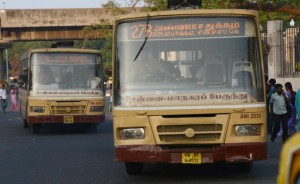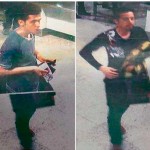Bunching occurs when more than one bus of a specific route number reaches the stop at or around the same time.
Sources in the MTC attribute this to both internal and external problems but it is the commuter who is left to wait for a long time.
“I travel from Anna Salai to Kaviarasu Kannadasan Nagar on bus route 2A. Especially in the evening, three to four buses come within a span of five minutes and, then, one has to wait for nearly twenty minutes for the next bus to arrive,” said M. Vijayanth, who works in a private firm on Anna Salai.
The problem is also faced by commuters who travel on bus route 27B (CMBT to Anna Square).
“A few weeks ago, I got into a crowded 27B bus at Simpsons bus stop and travelled till Naduvankarai. I stood all through the journey. When I alighted, I saw an empty bus of the same route number right behind,” says S. Jeyapradha, another commuter.
Sources in the MTC said various factors lead to bunching.
“One of the reasons is the insufficient number of time-keepers in termini. If two or more buses arrive together, a time-keeper is required to adjust the time and send them for the next trip,” said a source in the transport corporation, adding that the problem commonly occurred on high-frequency routes.
“The time-keeper is under pressure to avoid parking of buses in the terminus. Buses are also despatched together from the depot itself and this, too, leads to bunching,” the source added.
Ticket-checkers’ role
According to the source, ticket-checkers in bus stops are required to check for bunching and report cases to the headquarters.
“But they are only keen about checking for tickets,” the source said.
Transportation experts say the government should give priority to the development of modes of public transport.
“Bunching has been a problem for decades. Unless a dedicated service like the Bus Rapid Transit System (BRTS) is introduced, passengers’ wait at bus stops will only get longer,” said an expert.


